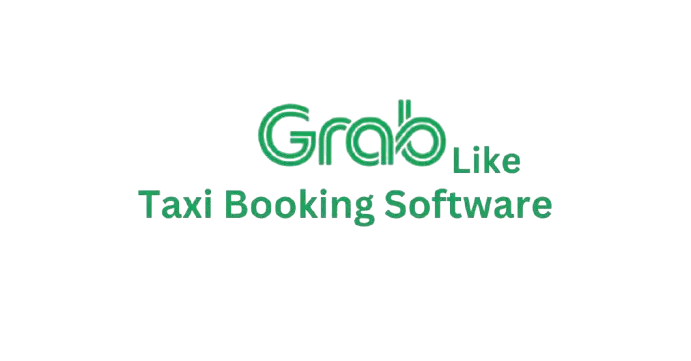The emergence of taxi booking software like Grab, Lyft, and Uber has significantly altered how people travel. It has become increasingly common for individuals to rely on taxi booking apps instead of traditional taxi services. This shift is due to the convenience offered by these apps, which provide a quick and affordable way to access transportation.
The rise of on-demand taxi booking services has disrupted traditional taxi businesses and generated substantial revenue in a relatively short period. Industry experts suggest that the rapid growth and success of taxi booking software have contributed to a decline in the use of conventional taxis.
Uber has established itself as a major player in the U.S. market, and in Asia, Grab has seen similar success. As both companies continue to grow, Grab is expected to remain a strong competitor in the global taxi booking industry.
Grab, commonly referred to as GrabTaxi in Asia, has built a reputation for being a dependable taxi booking app. The company reached a significant milestone, which was highlighted on its official website, marking its continued growth and impact in the industry.
Entrepreneurs looking to enter the taxi business are often inspired by the success of Grab. Despite operating in a limited geographic area, Grab has managed to generate significant revenue. Recently, a report on Crunchbase highlighted Grab’s ability to raise funds to further develop its on-demand bike services.

What Makes Grab Clone App Development Stand Out?
For entrepreneurs and startups, the appeal of developing taxi-booking software like Grab is strong. While apps like Uber and Lyft are often considered the best in the industry, Grab offers certain features that set it apart from its competitors. These unique aspects of the GrabTaxi model can benefit anyone looking to develop their own Grab clone app.
Leading taxi booking software allows users to choose services based on their preferences and budgets. Including such options in your Grab clone app can improve usability and help distinguish your app from others. Adopting features from the Grab model can prove advantageous since they offer a user experience not yet available in other taxi apps.
Those unfamiliar with these unique features can find an overview below to help guide the development of their Grab clone app.
Key Features of Taxi Booking Software

In addition to the unique features mentioned earlier, several essential components have contributed to the success of apps like Grab. Entrepreneurs developing a Grab-like app should consider integrating these features into their taxi booking software.
A standard taxi app typically includes the following components:
Passenger App – This is for booking rides and tracking.
Driver App – This is receiving and managing ride requests.
Admin Panel – This is managing overall operations and ensuring smooth functionality.
Both the passenger and driver apps share similar features, but the admin panel plays a distinct role in managing the business.
Essential Features
Login:
Users can log in effortlessly using their email, phone number, or social media accounts. This simplifies access and provides flexibility, allowing passengers and drivers to quickly begin using the app. A secure login process ensures that personal data is protected, enhancing trust and user experience.
Booking Options:
Passengers can easily specify their pickup and drop-off locations, ensuring precision and convenience. The app provides a list of available drivers, allowing users to select one based on their preferences. This feature ensures users have complete control over their travel plans, making the process smooth and user-friendly.
GPS Live Tracking:
With real-time GPS tracking, passengers can monitor the exact location of their taxi during the ride. This feature adds transparency and peace of mind, as users are informed of their driver’s movements and estimated arrival times. It also helps drivers navigate efficiently to reach the passenger without delays.
Fare Estimation:
Before confirming a ride, passengers can view an estimated fare based on the distance and time required. This upfront fare calculation gives users clarity on the cost, avoiding surprises at the end of the journey. It’s an important feature that builds trust and ensures transparency in pricing.
Payment Options:
Riders can choose between various payment methods, such as cash, credit/debit cards, or digital wallets. The flexibility of these options caters to different user preferences, making transactions quick and hassle-free. Secure payment processing ensures that users can trust the app with their financial information.
Push Notifications:
Users receive timely notifications about their ride status, upcoming offers, and promotional deals. This keeps passengers informed about new features and enhances user engagement. Whether it’s a reminder for an upcoming trip or a discount offer, notifications are key to staying connected with users.
Booking History:
Passengers have access to a detailed history of their previous rides, including dates, locations, and fare amounts. This helps users track their travel habits, view past payments, and even rebook frequent routes. For drivers, it offers a record of completed rides and earnings, making it easier to manage trips.
Review/Feedback:
After completing a ride, passengers can rate their experience and provide feedback on the driver. This feature encourages accountability, helps improve service quality, and allows users to share their experiences. Positive ratings enhance a driver’s reputation, while constructive feedback can help identify areas for improvement.
Admin Panel
The admin panel serves as a powerful tool for managing the entire operation. It allows the admin to monitor driver performance, track customer information, handle complaints, and analyze earnings. Administrators can also add or remove drivers from the platform based on user feedback.
There are certain key elements that should be addressed when developing a Grab app clone, which are highlighted below.
Choosing the Right Platform: Android/iOS
Deciding between Android and iOS is a critical aspect of developing your taxi booking software. The platform you choose should align with the preferences of your target audience. For maximum reach, it’s recommended to launch your passenger app on both Android and iOS. Additionally, the app should feature an intuitive interface that can adapt to different devices and screen sizes for an optimal user experience.
Cost of Developing a Grab-like App
The exact cost of developing a Grab-like app can vary depending on several factors, including the complexity of the project, the development speed, and the selected platforms. Mobile app development companies typically base their pricing on the app’s design, quality, and backend requirements. The developer’s hourly rate also plays a significant role in determining the overall cost. For Android development, require approximately 900 hours, while for iOS development, take around 700 hours. However, opting for a ready-made Grab clone app can significantly reduce development costs.
Conclusion
Developing a Grab-like app for your taxi business is now more accessible than ever with the help of experienced app developers. To begin, it’s essential to find a reliable mobile app development company that fits within your budget. Utilizing ready-made taxi booking software can also be a cost-effective solution for starting your Grab clone app development.




Comments are closed.